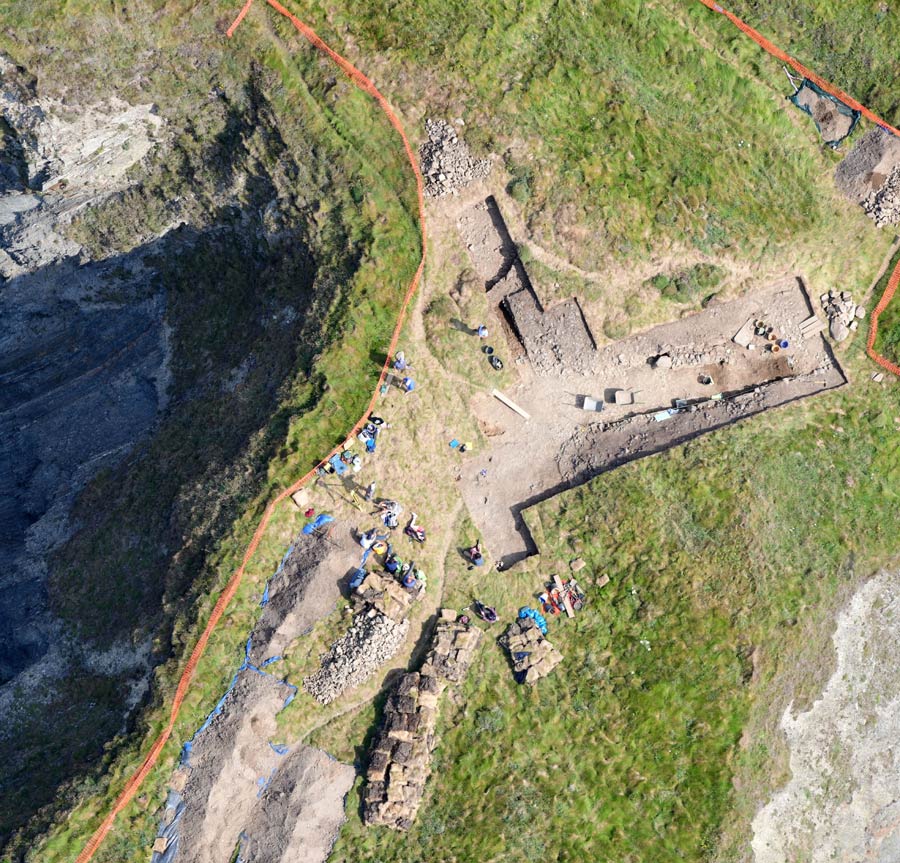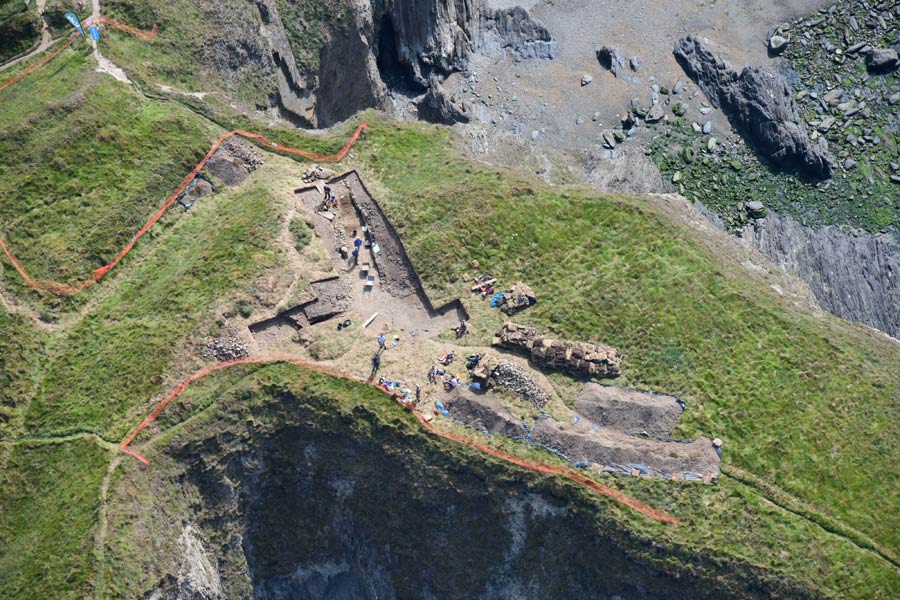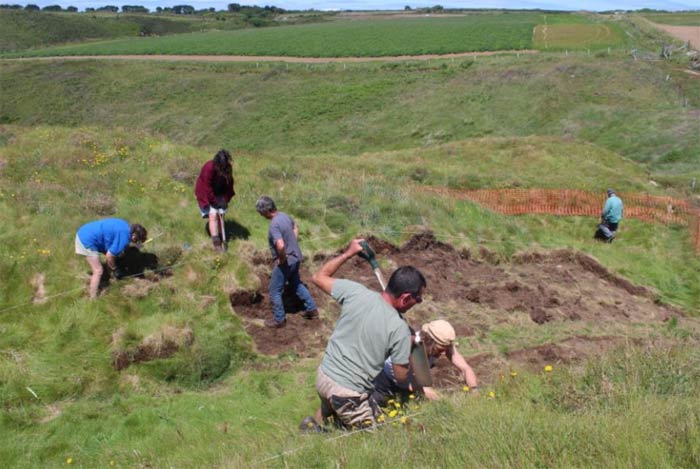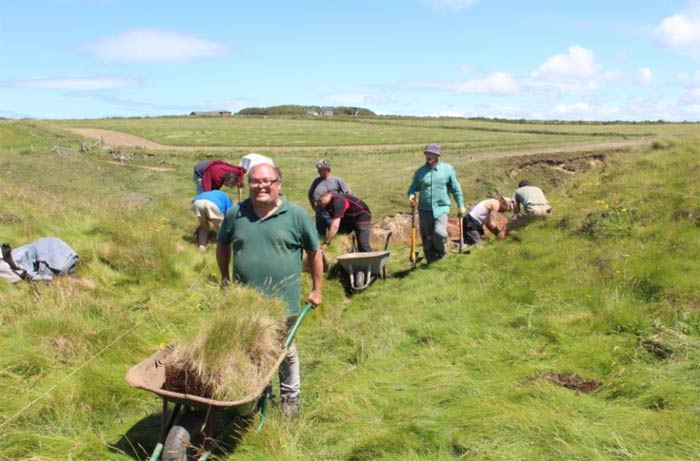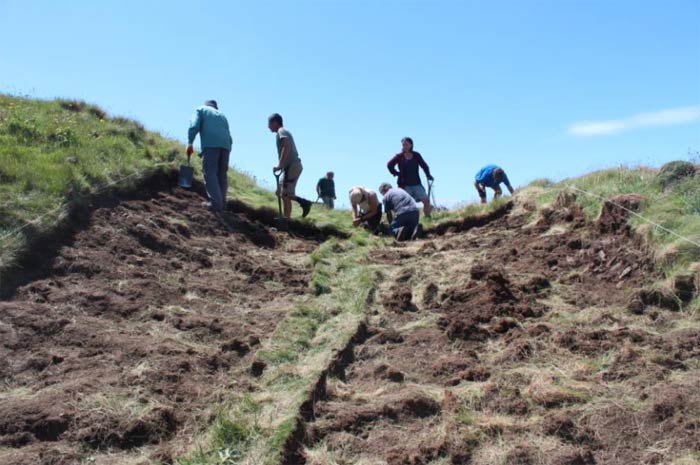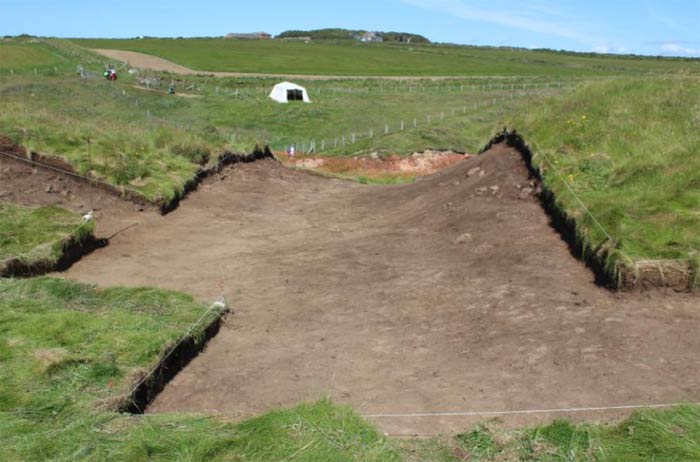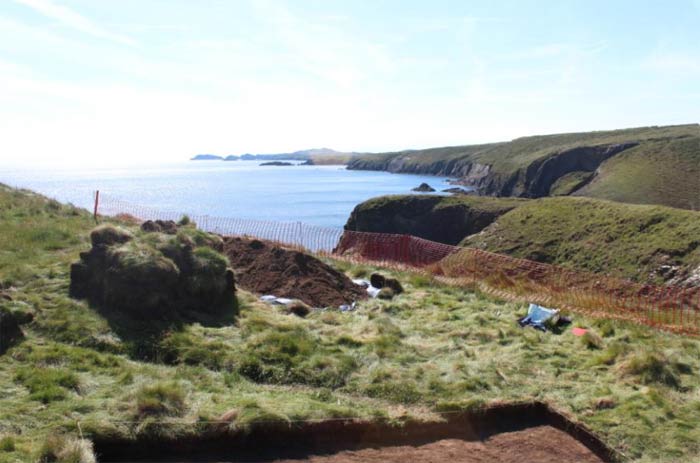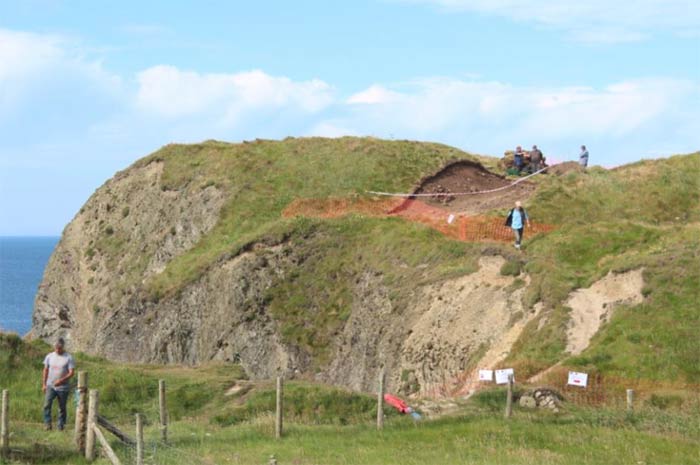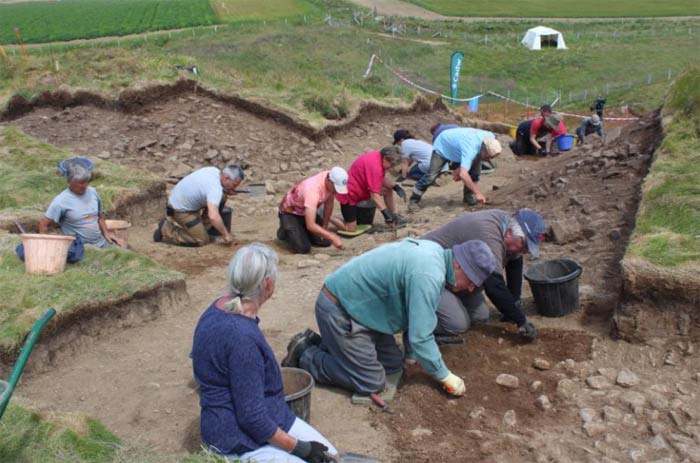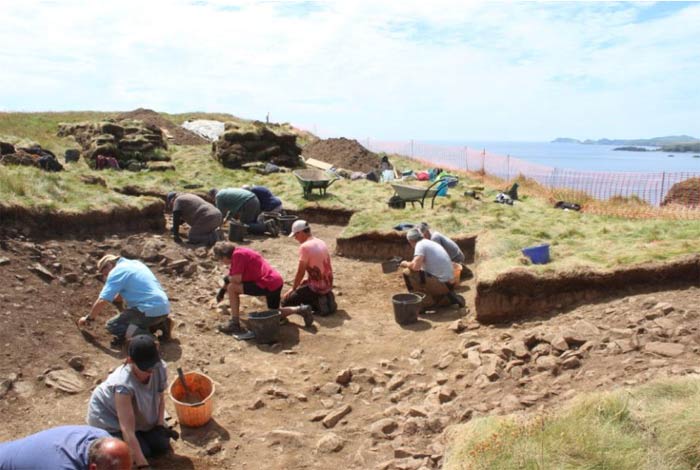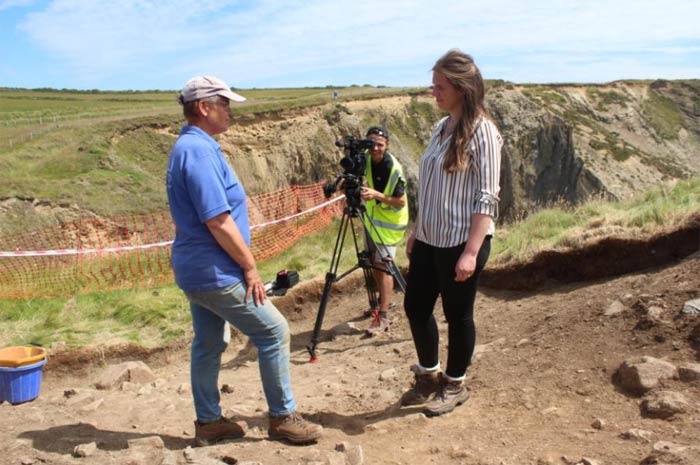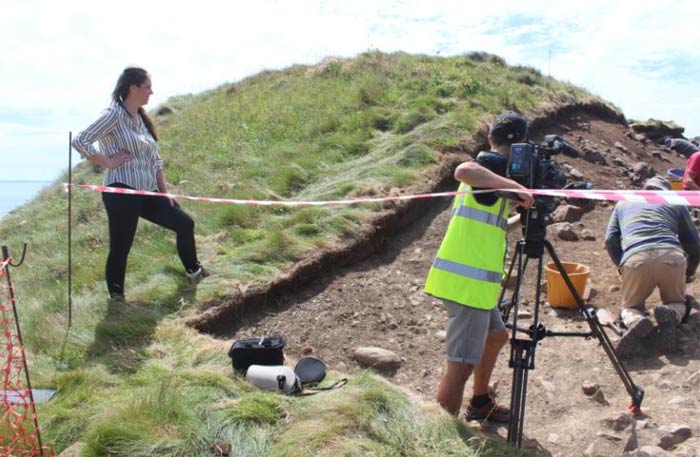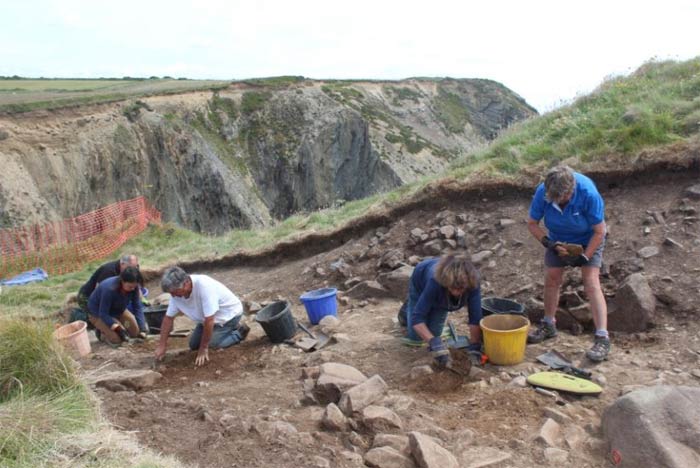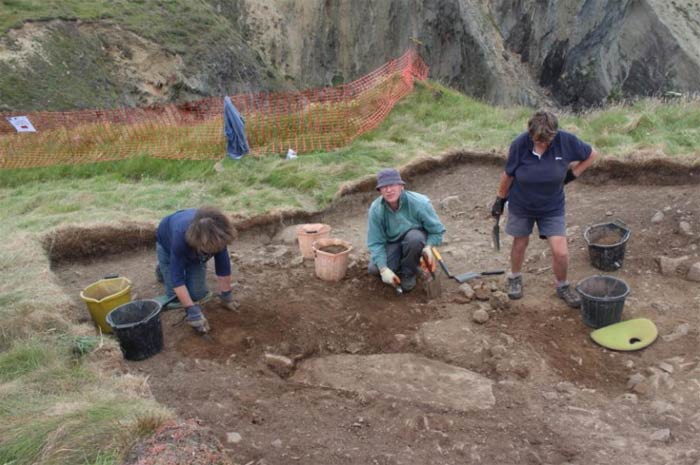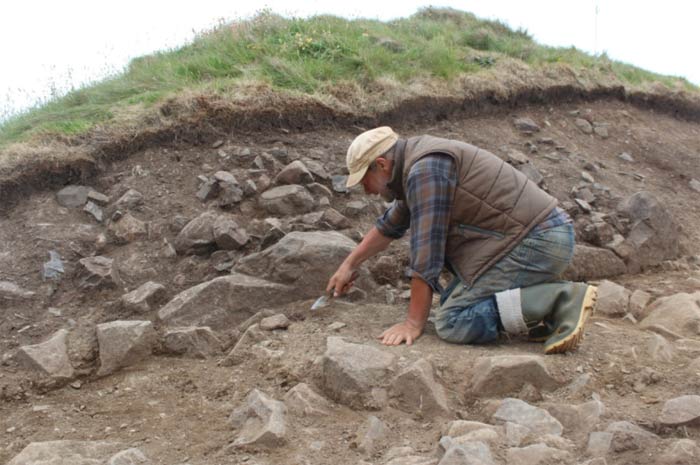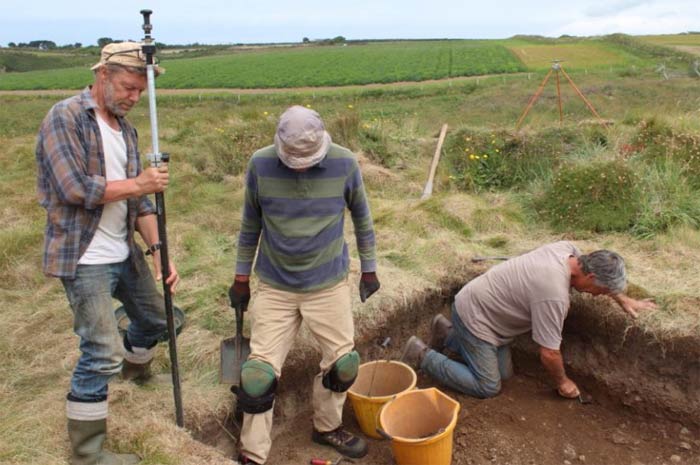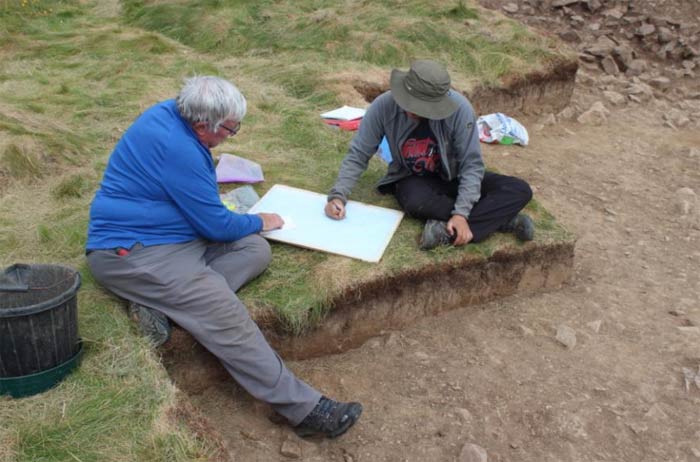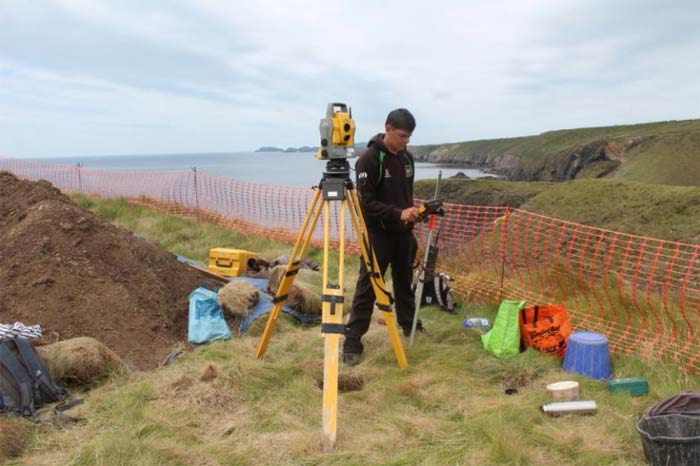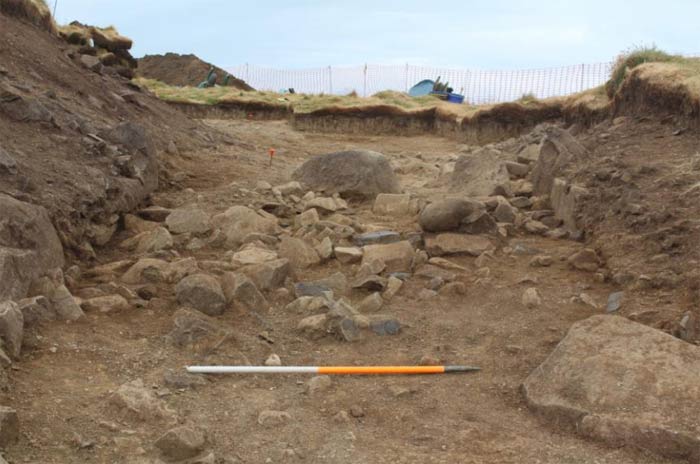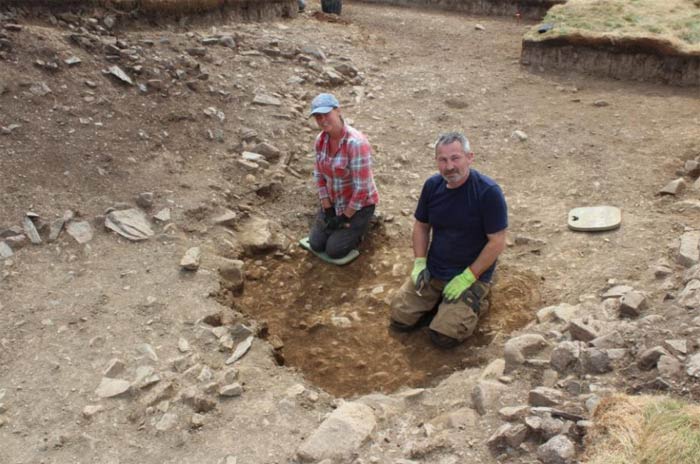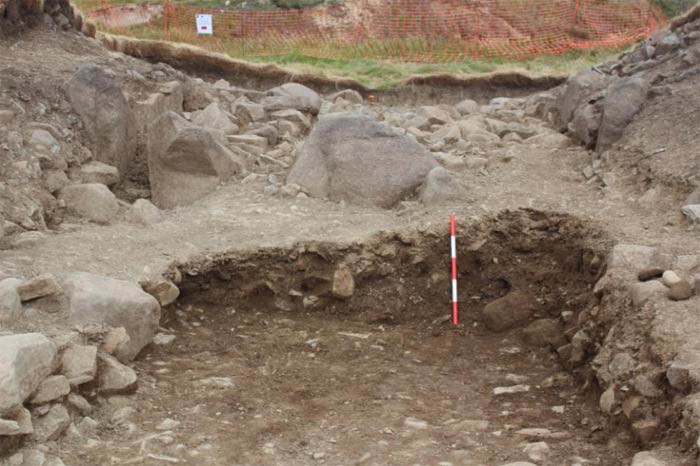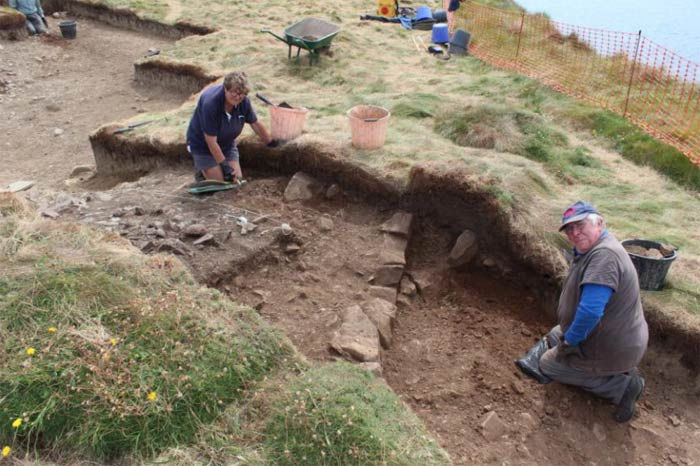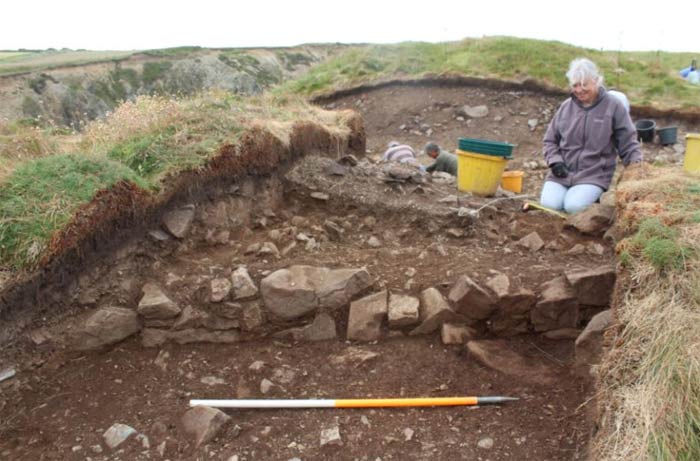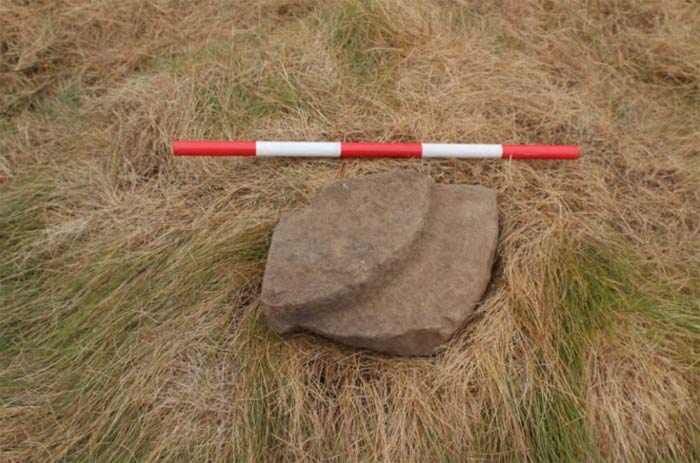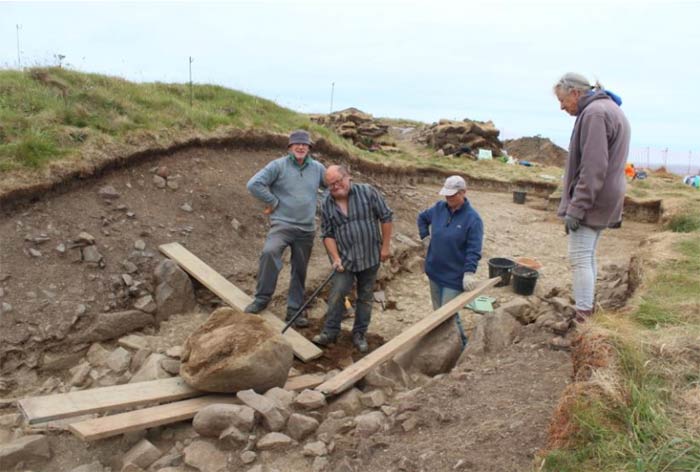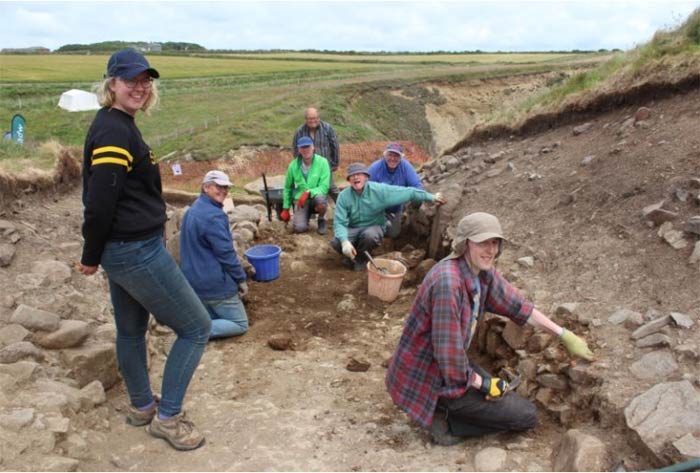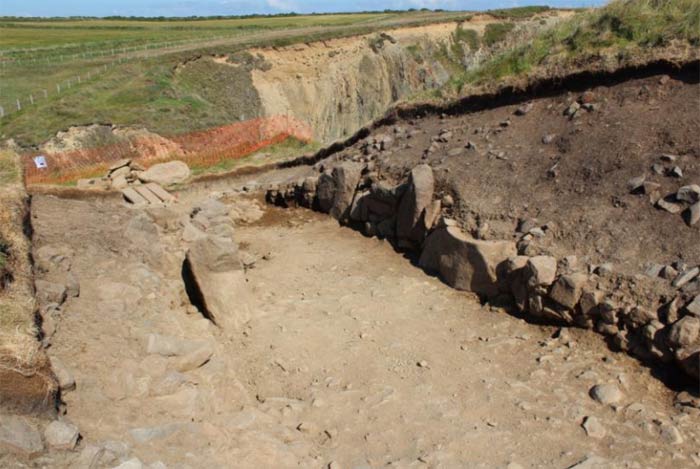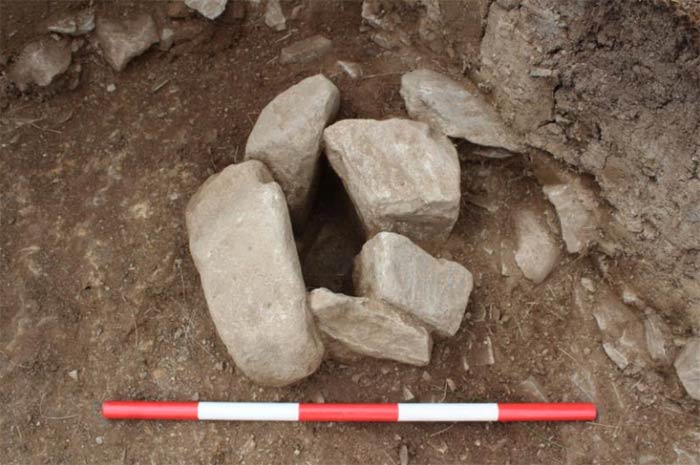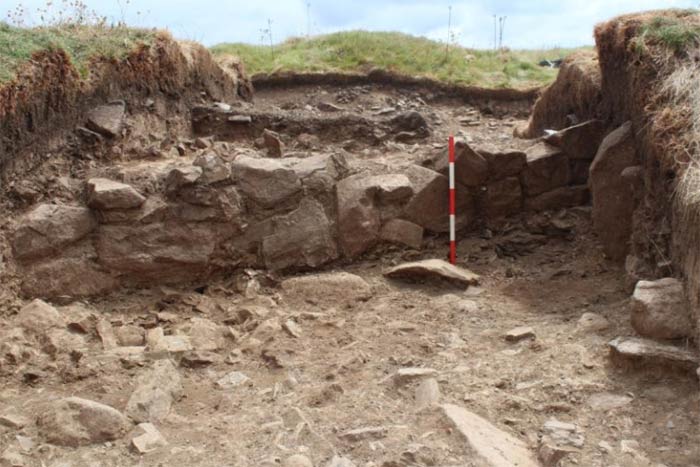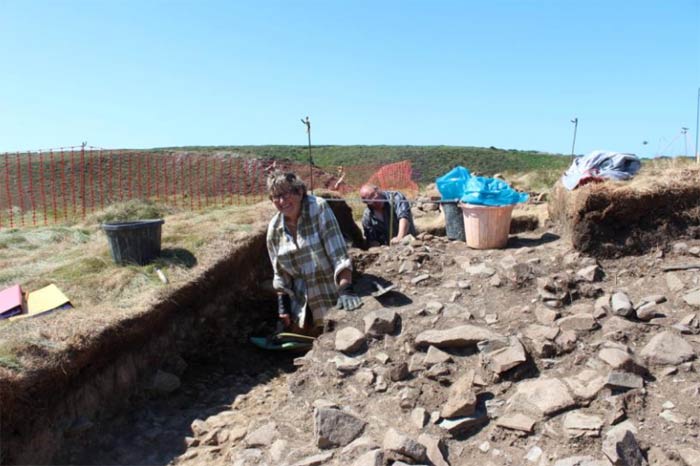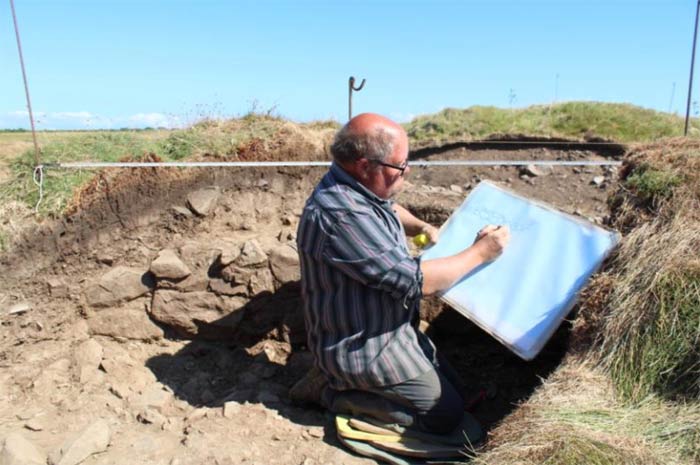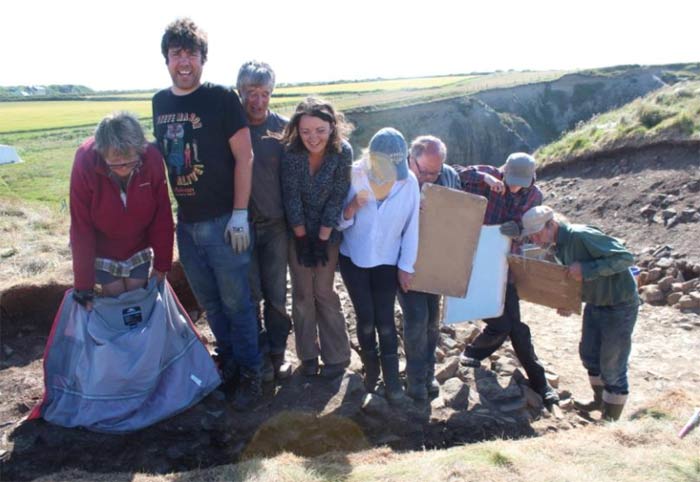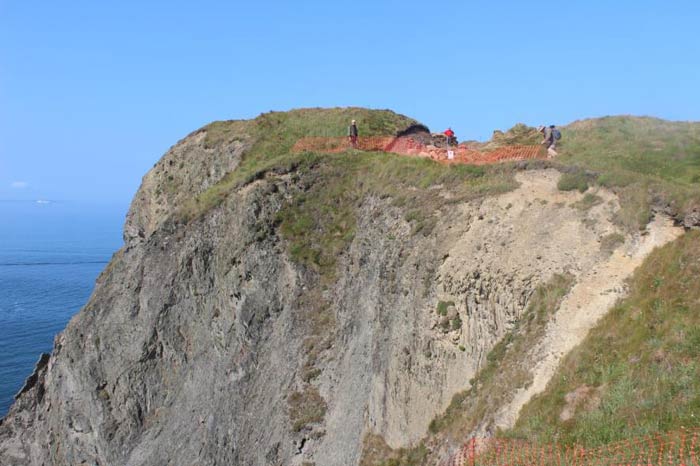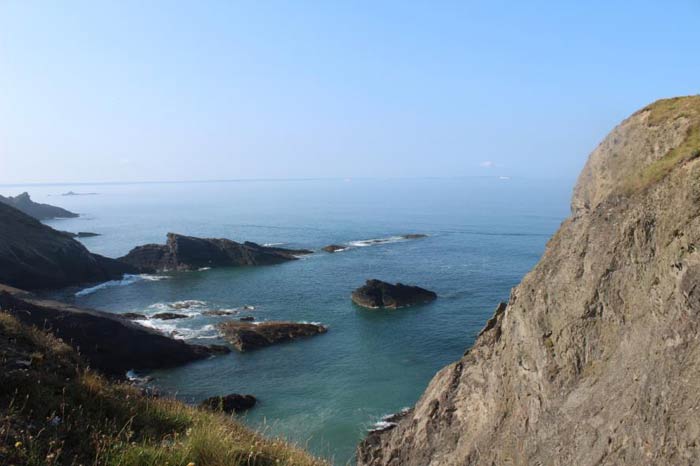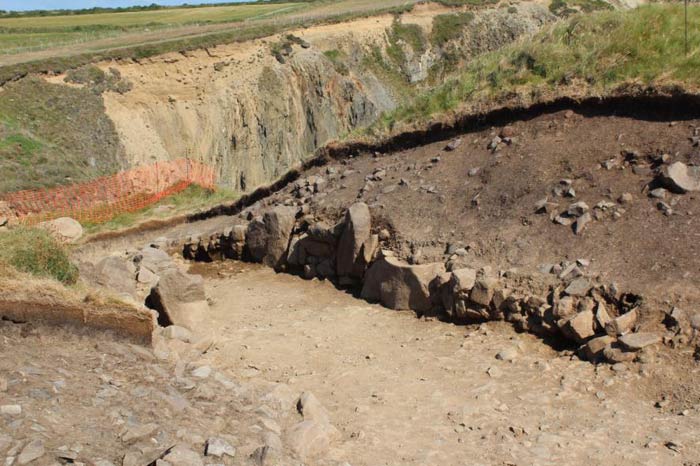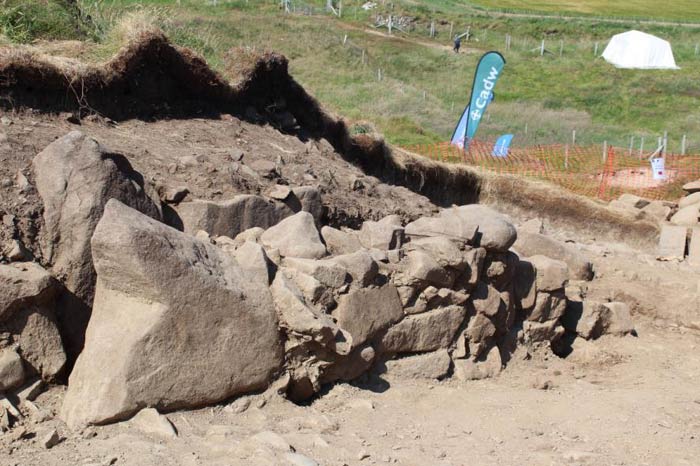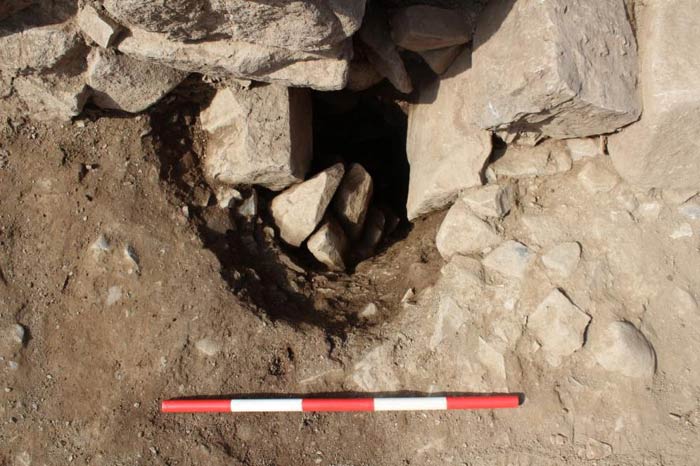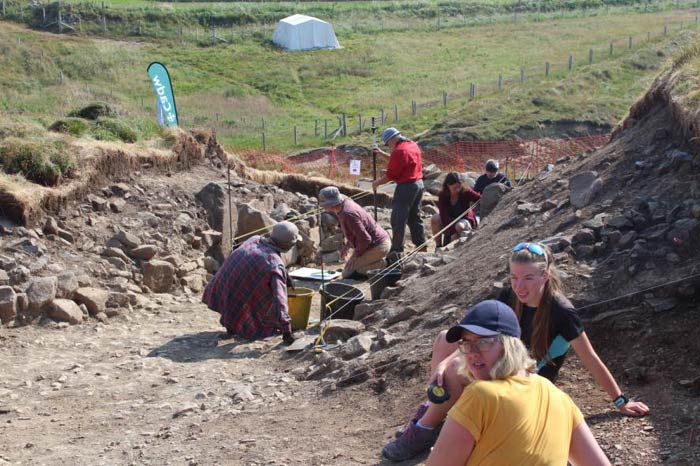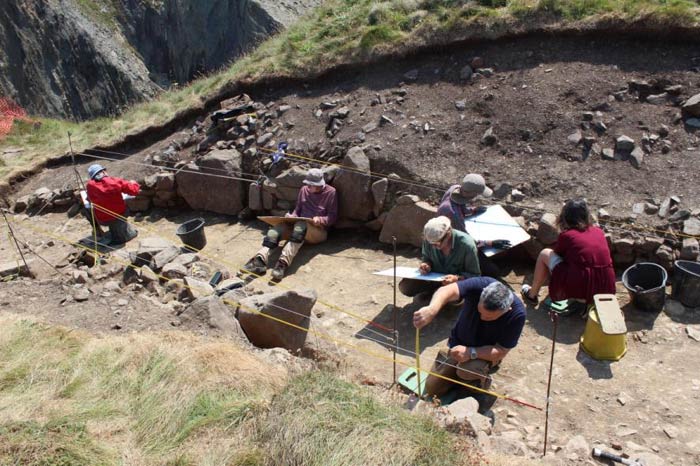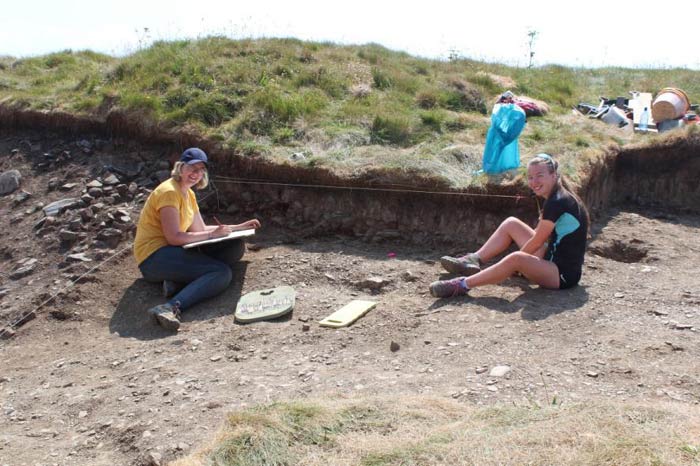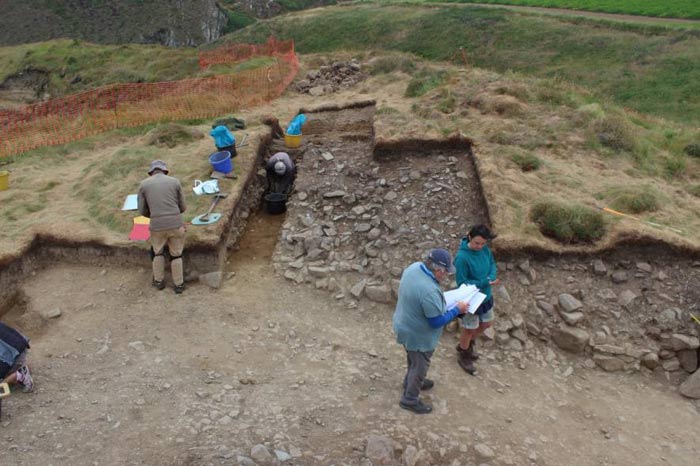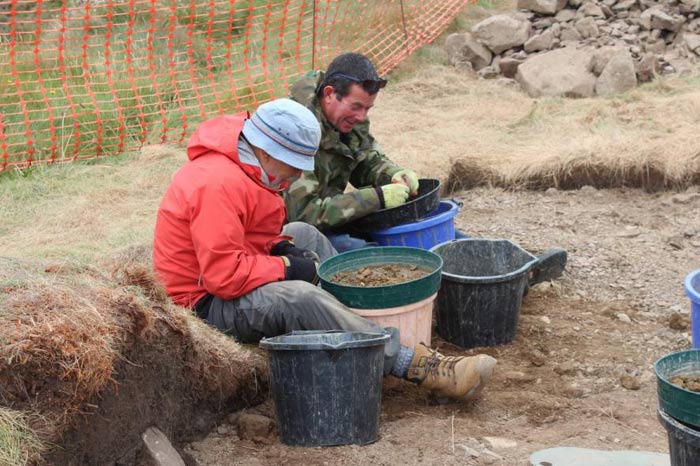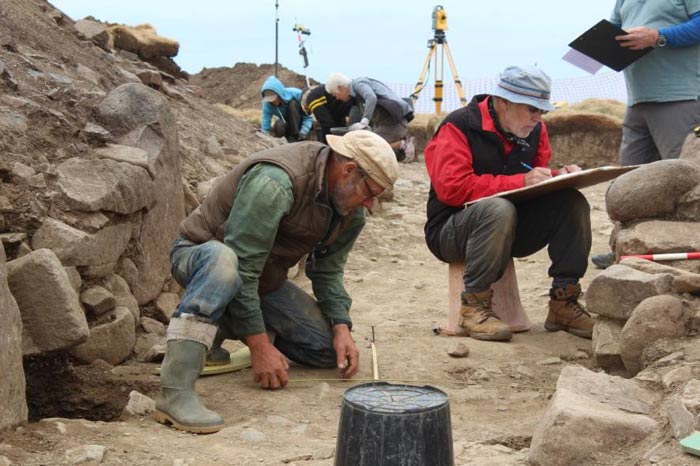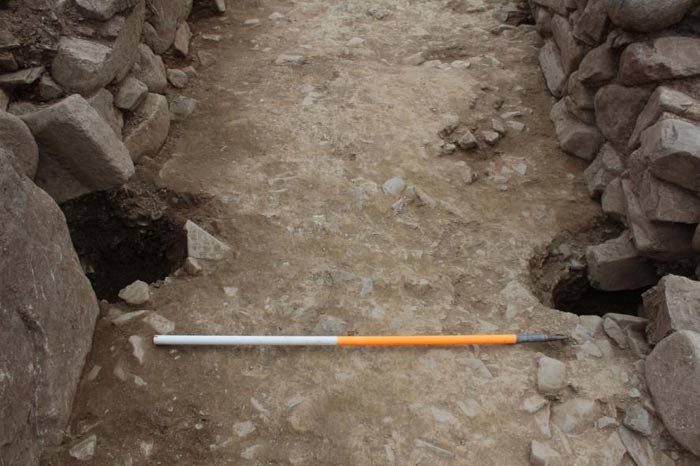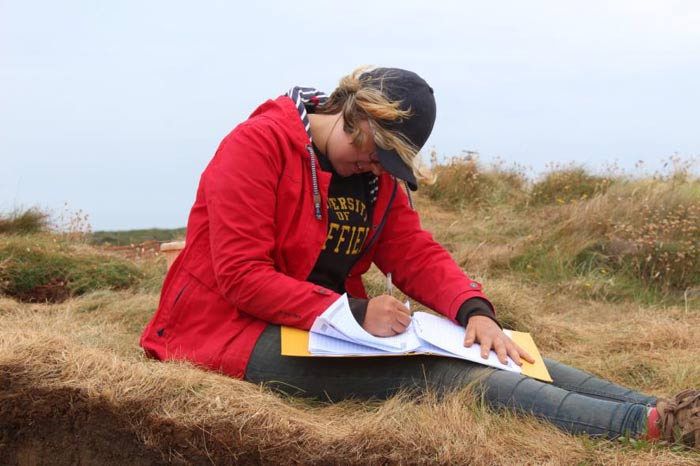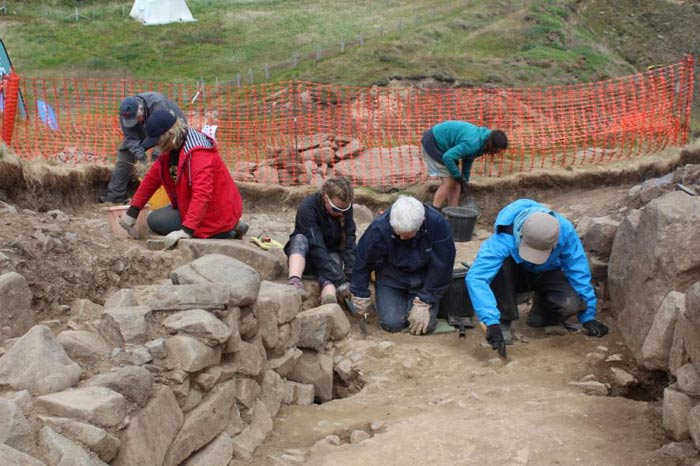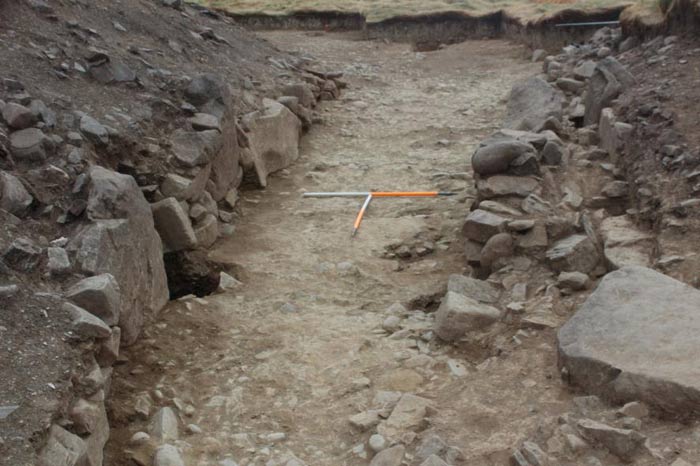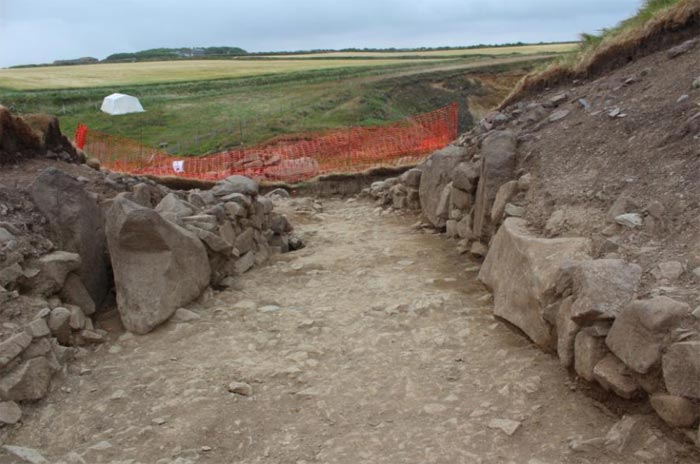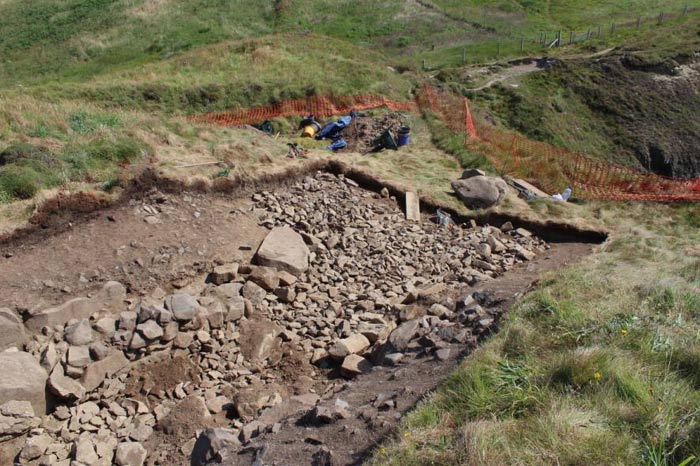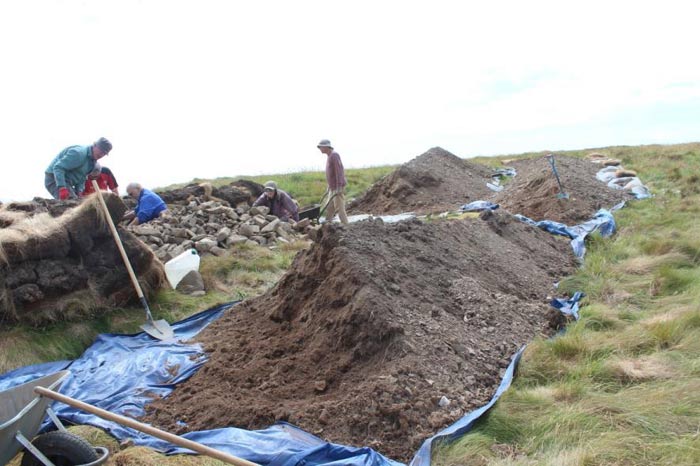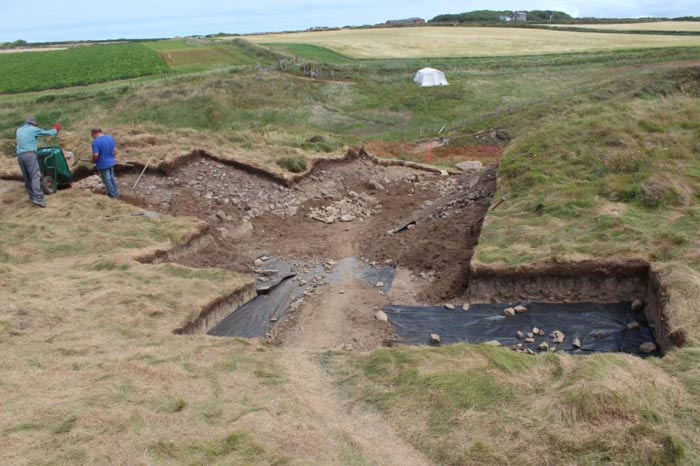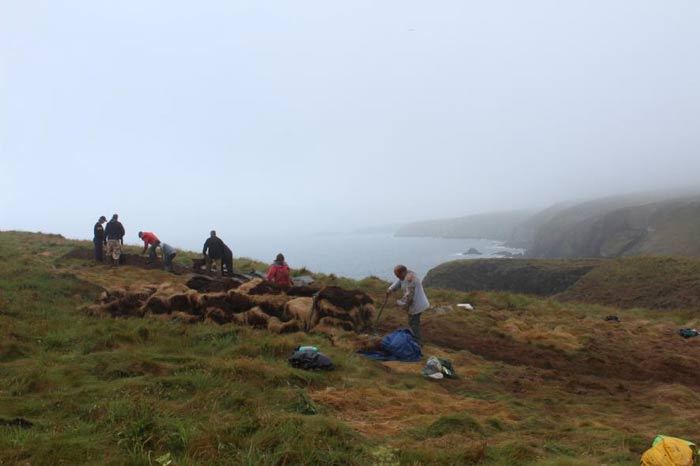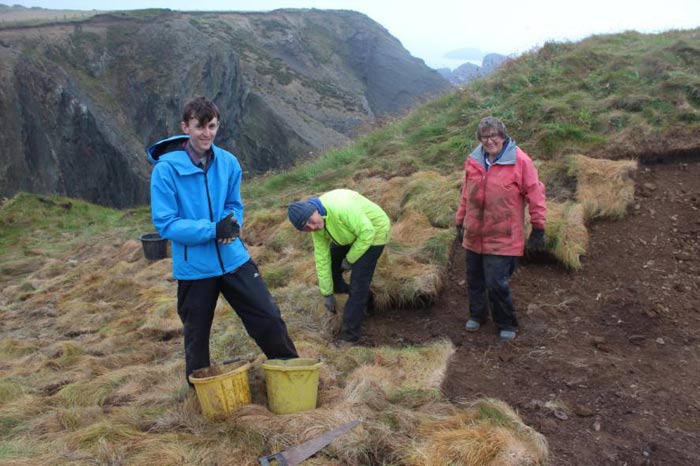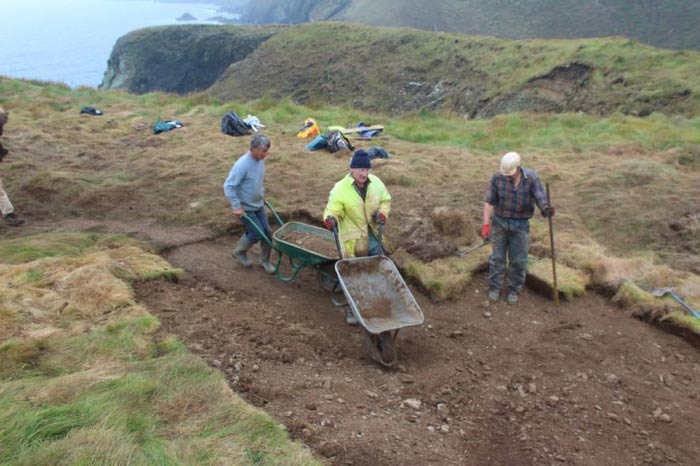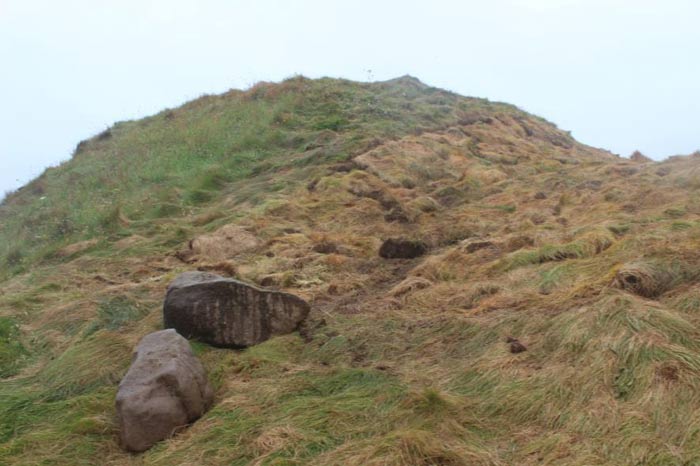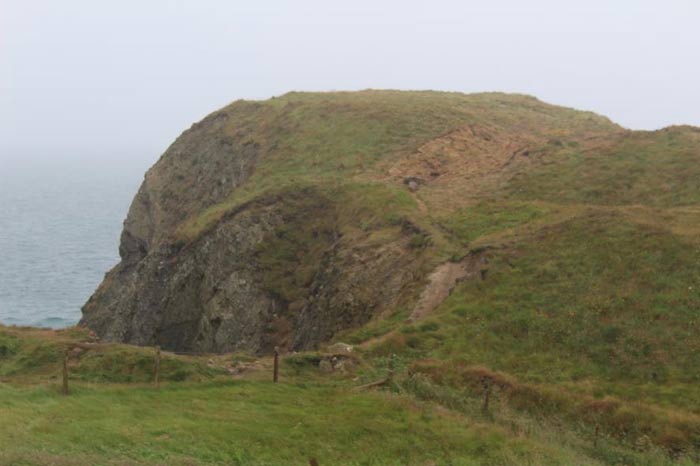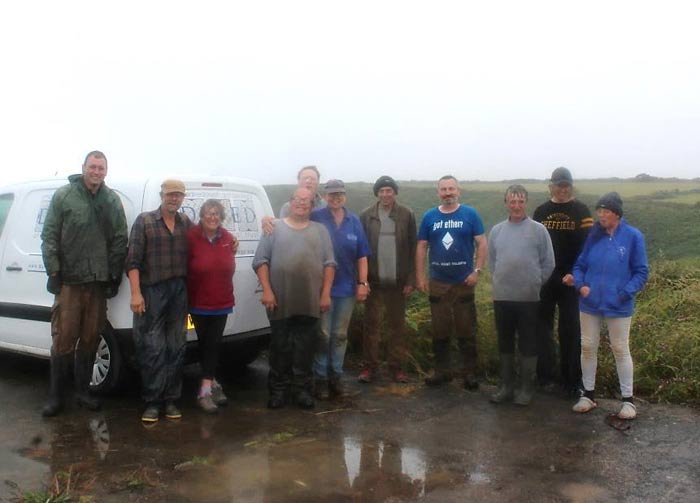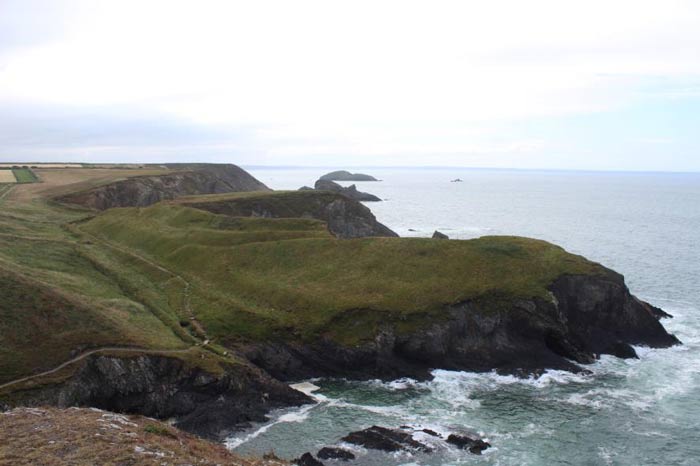| The promontory fort is being actively eroded and in 2019 the aim of the excavation is to recover as much information as possible from the entrance to the fort before it is lost to the sea, or before excavation becomes too dangerous. This project is being funded by Cadw and is being undertaken in partnership with The National Trust which owns the site.
Aerial photographs taken by Toby Driver of the RCAHMW on 15 July as part of the Cherish project. https://www.facebook.com/CherishProject/
|
| Days 1 and 2 – 1st and 2nd July 2019
The first two days of the excavation everyone works really hard removing the thick springy turf that covers the site, within the area of the hill fort entrance. Thankfully both days are are sunny and bright, although a stiff breeze blows across the site all the time.
|
| Days 3 to 5 – 3rd to 5th July 2019
The weather continues to be hot and sunny.
|
| Days 6 to 7 – 6th and 7th July 2019
The good weather continues and we carry on removing deposits of tumbled stone and soil that have eroded from the defensive banks either side of the entrance.
|
| Days 9 and 10 – 9th and 10th July 2019
Written by Hubert Wilson
Day 9 morning and the fort entrance awaits the arrival of our happy band of volunteers.
Day 10 and more of the wall in the inner bank was revealed whilst Jude trowels the other side of the bank. As well as Romano-British pottery Jude recovered a small fragment of a crucible probably used in metal working.
This fragment of a quernstone was found within the possible roundhouse. It was used to grind cereals and produce flour.
|
| Days 11 to 13 – 11th to 13th July 2019
Work continues removing all the stone and soil that has fallen from the defensive banks over the years into the entrance of the hillfort. Elsewhere recording takes place of features we have identified within the internal area of the entrance.
|
| Days 14 to 16 – 14th to 16th July 2019
|
| Day 17 to 19 – 17th , 18th and 19th July 2019
Day 17 – a narrow trench excavated through the western bank eventually reveals the old ground surface on which the bank was constructed. Excitingly there is also evidence for activity predating the construction of the bank and numerous flint flakes have been recovered from below the bank as well. Unfortunately we are running out of time so digging has to stop and we concentrate on finishing the recording.
Day 18 – the joys of backfilling! Thankfully it’s another fine day.
Day 19 – Unfortunately not such a nice day. The wind is blowing and it is raining heavily but everyone is very stoical and wants to see the backfilling completed.
Many, many thanks from Fran and Hubert (DAT) to all the volunteers who took part in the excavation. It was a pleasure to work with you and as usual we were amazed at the hard work and commitment of you all. The results have been fantastic and hopefully we will get the chance to return next year. An interim report will now be produced on this year’s work; which once completed will be found on the DAT website. Our thanks go to Cadw who funded the project, project partner the National Trust who own the site and their tenant Ian, and Pembrokeshire Coast National Park. In particular thanks go to Menna Bell (Archaeologist [South Wales] National Trust) for so ably giving site tours at the weekends. We missed you during the week, although Hayley was a very good stand-in!
|
Porth-y-Rhaw Coastal Promontory Fort – Dig Diary 2019
